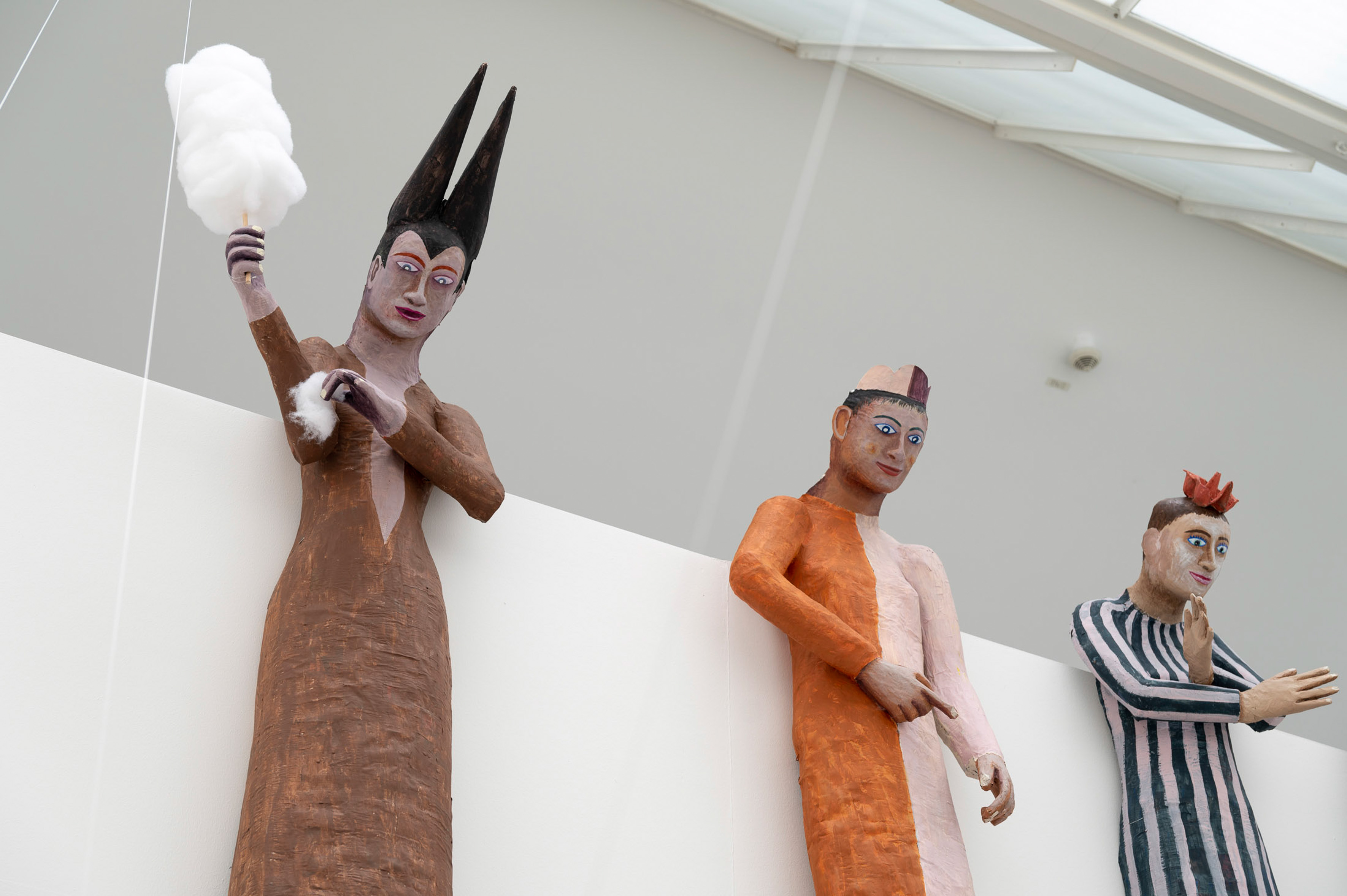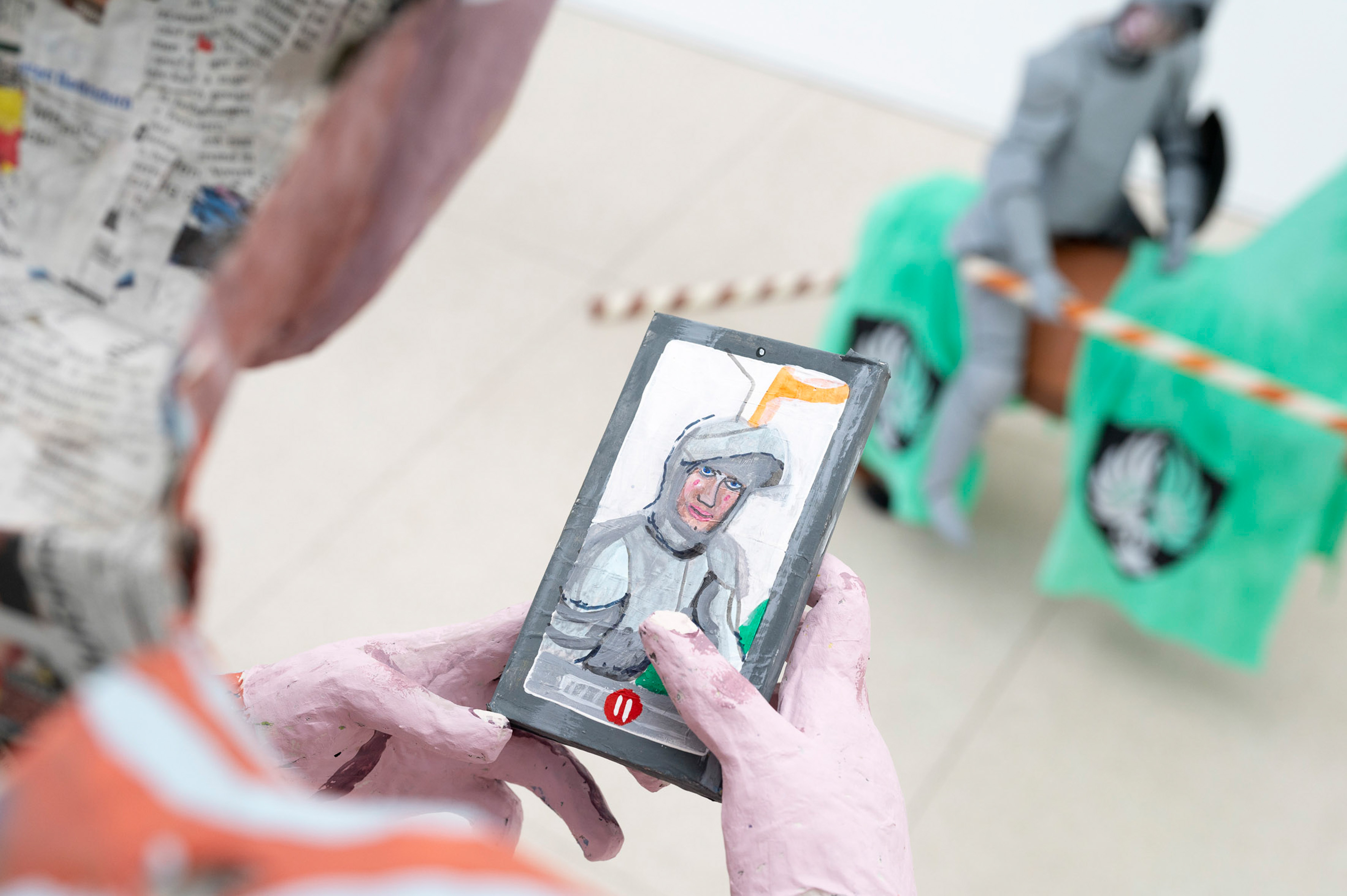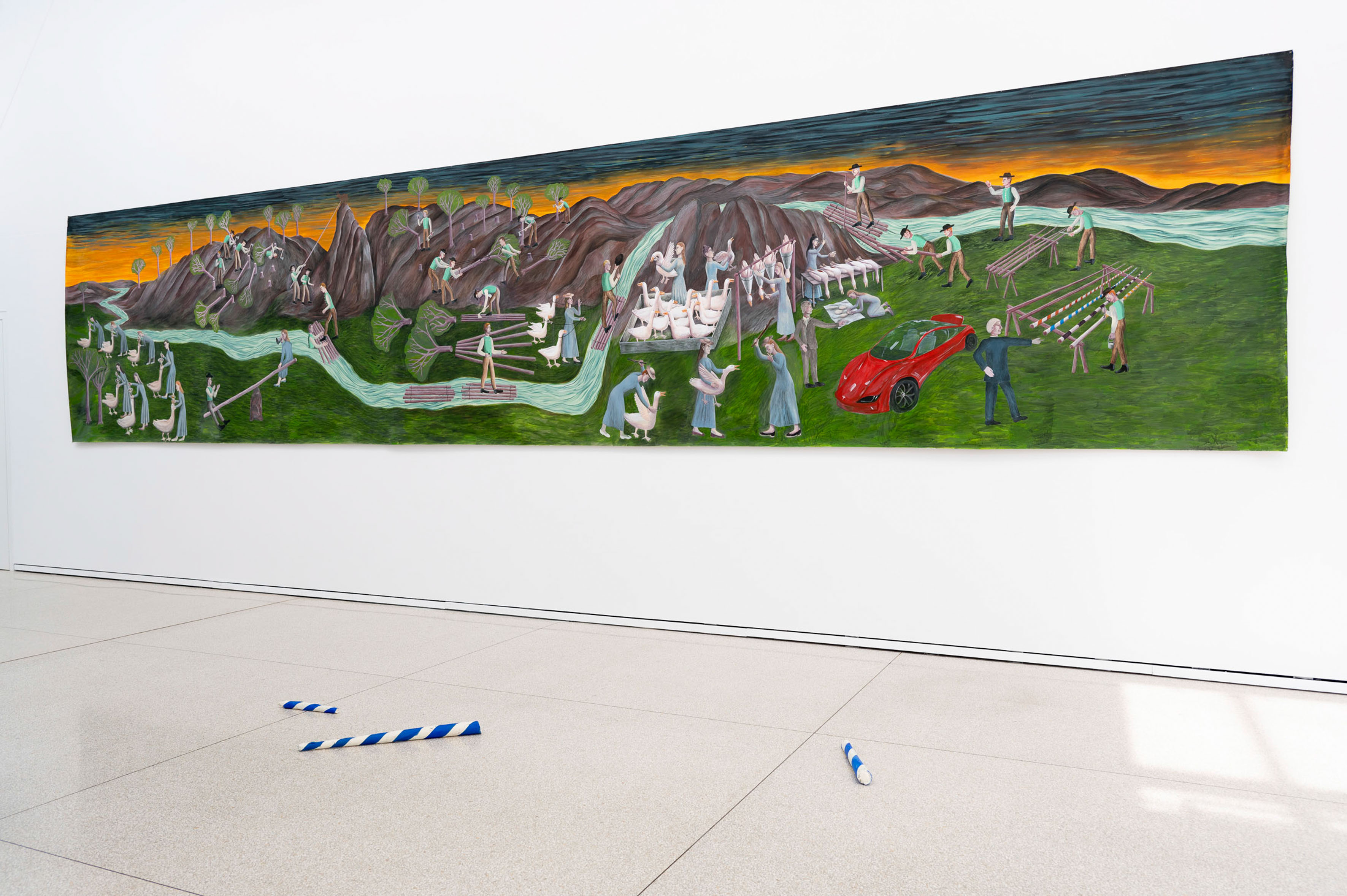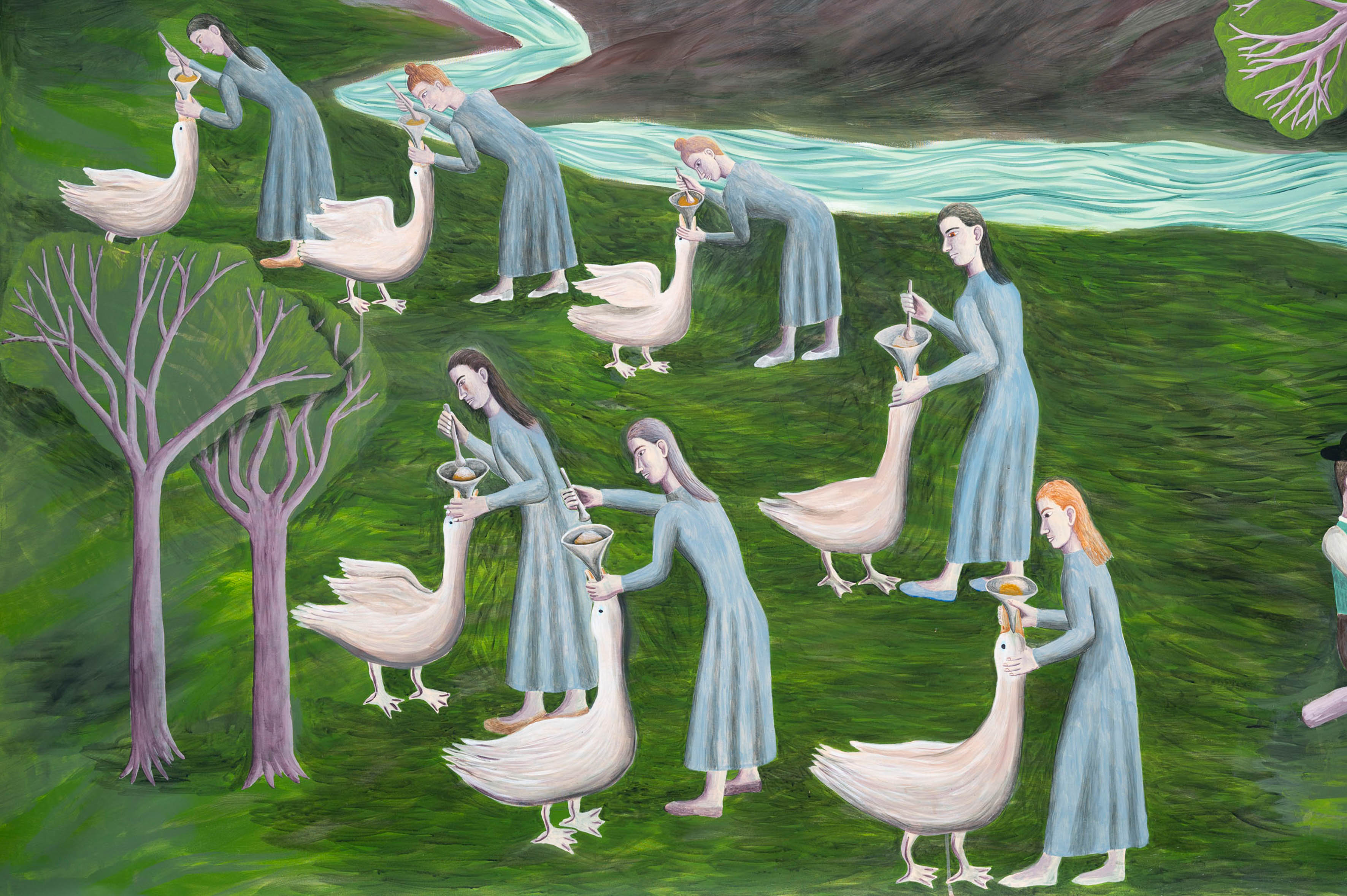YYYYMMDD >>> BACK HOME <<< >>> SELECTED FEATURES <<< >>> HIDDEN ARCHIVE <<<
[20230626]
SAVOIR VIVRE by AGNES SCHERER at HEIDELBERGER KUNSTVEREIN curated by SØREN GRAMMEL [from 20230527 to 20230806]
[Photos: Tanja Meissner]














Heidelberger Kunstverein announces the major solo exhibition Savoir Vivre by artist Agnes Scherer (*1985).
Amidst the Kunstverein’s hall, visitors face the sinister image of a chivalrous fight. Two knights on their horses are galloping toward each other. One is just being hit by the lance of his opponent. Twelve court ladies are watching the scene.
The depicted life-and-death competition does not take place in reality. The knights and ladies turn out to be sculptures made of painted paper-mâché. The facial expressions and postures of the figures seem puppet-like. No blood flows.
For her new project, Savoir Vivre Scherer has transformed the hall into a medieval tournament to problematize the persistence of the culture of “courtly love (German: “hohe Minne”) and its idealization of “the lady” as the object of desire and source of competition in patriarchal societies: Widespread in Europe throughout the Middle Ages, “courtly love” was characterized by a series of stylized rituals between a knight and a married lady of high rank. In popular culture, the concept is closely linked to fantasies of romantic liaisons or colorful jousting tournaments observed by adoring female spectators.
The puppet-like court ladies are actually hollow figures, as visitors will discover on closer inspection. Their eye holes direct the viewer’s gaze to the scene below, where the martial masculinity of the knights is put on display. With this direction of the gaze–namely with the manipulation of different perspectives–Scherer reflects on the gap between the active experience of the tournament fighters and the passive spectatorship of the women on the tribune. For we do not know how women in the High Middle Ages actually experienced the tournaments that were supposedly held in their honor. The female perspectives on the events are impossible to reconstruct. The walk-in hollow figures embody this void in historical knowledge.
Scherer caricatures how symbolic elevation corresponds to women’s actual degradation. Her artistic research shows: After tournaments, “Minne” poet knights boasted about their “consumption of lances,” the wearing away of material and life in a display of honor, to the benefit of no one. Thus, the project also illustrates how the idealized customs of “courtly love” serve as a blueprint for the heteronormative bourgeois concept of love and its neurotic content.
In the city of Heidelberg, Savoir Vivre is a site-specific project. Consider the immense effort that Heidelberg’s cultural leaders put into returning the Codex Manesse – a medieval manuscript of illustrated Middle High German courtly love lyrics (German: “Minnesang”) back to the University Library after World War II. And in the Baden-Württemberg region, numerous medieval spectacles and re-enacted jousting tournaments are held, including the annual medieval market in Esslingen and the jousting games in Horb am Neckar or at Kaltenberg Castle in Upper Bavaria, where martiality is staged “authentically.” Savoir Vivre thus raises the politically charged question of why so many people today are longing for a world whose social structures were based on stereotypical gender roles and an authoritarian class system that could hardly be overcome.
Curated by Søren Grammel
Supported by STIFTUNG KUNSTFONDS
[Text: Søren Grammel]
©YYYYMMDD All content and design by Daniela Grabosch + Ricardo Almeida Roque unless otherwise stated. Images, Videos and Texts can only be used under permission of the author(s).